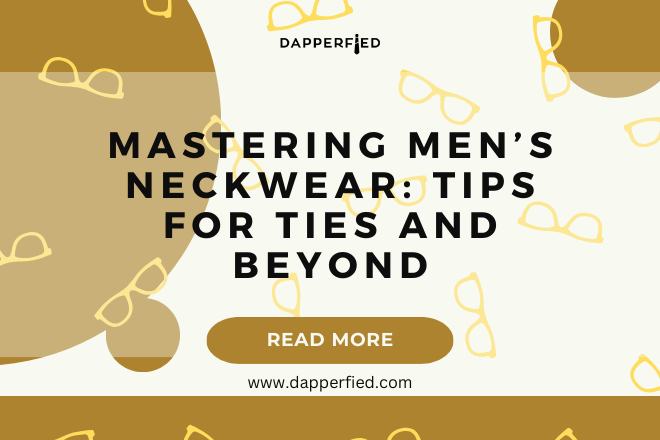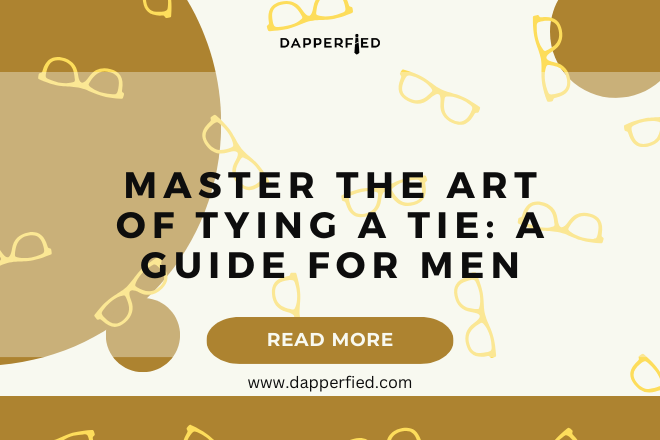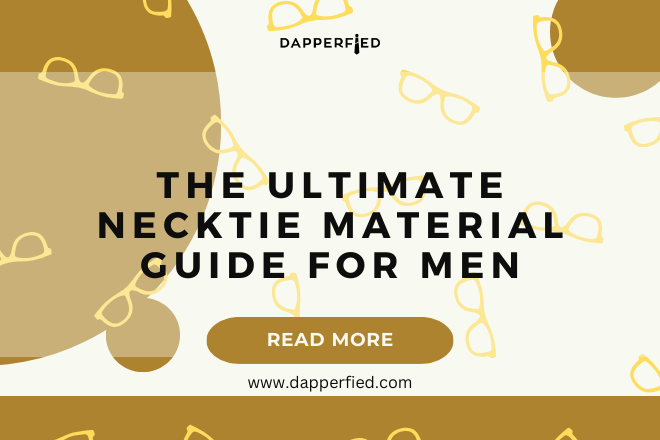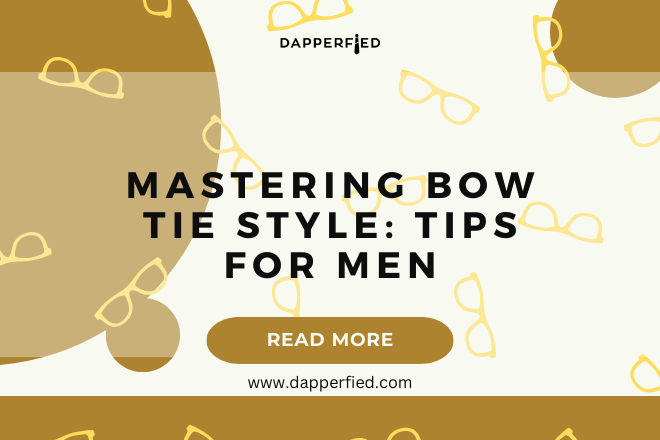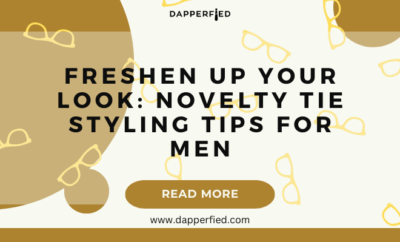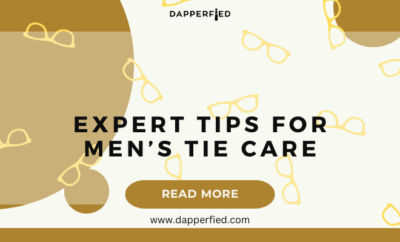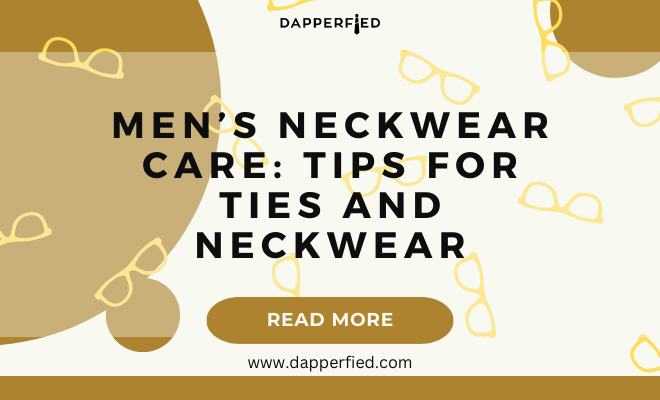
Men's Style
Men’s Neckwear Care: Tips for Ties and Neckwear
Neckwear, such as ties and bowties, are essential accessories that can elevate any outfit. Whether you wear them for work, formal events, or casual occasions, it’s important to take care of your neckwear to ensure they remain in good condition and last for a long time. Proper care and maintenance can help preserve the fabric, shape, and color of your neckwear, keeping them looking sharp and stylish. In this article, we will explore the best practices for neckwear care, including storage and organization, cleaning and maintenance, removing stains, ironing and steaming, repair and restoration, and tips for traveling with neckwear.
Neckwear is often made from delicate fabrics such as silk, satin, or wool, which require special care to maintain their quality. By following the right care routine, you can extend the life of your neckwear and keep them looking their best for years to come. Whether you have a collection of designer ties or a few favorite bowties, taking the time to properly care for your neckwear will ensure that they remain in pristine condition and ready to wear whenever you need them.
Key Takeaways
- Proper care and maintenance of neckwear is essential to keep them looking their best and lasting longer.
- Store neckwear in a cool, dry place and avoid hanging them for long periods to prevent stretching.
- Regular cleaning and maintenance, such as spot cleaning and steaming, can help prolong the life of neckwear.
- Act quickly to remove stains from neckwear using gentle methods to avoid damaging the fabric.
- Ironing and steaming can help remove wrinkles from neckwear, but be sure to use the appropriate heat setting and technique to avoid damage.
Storage and Organization
Proper storage and organization are key to maintaining the shape and quality of your neckwear. Storing ties and bowties in a way that prevents wrinkles and creases is essential for keeping them looking sharp and ready to wear. One of the best ways to store ties is by using a tie rack or hanger specifically designed for this purpose. This allows you to hang your ties neatly without causing any damage to the fabric or shape. Another option is to roll your ties and store them in a drawer or a dedicated tie case. Rolling the ties prevents creases and wrinkles, ensuring that they remain in good condition.
For bowties, it’s best to store them flat in a bowtie case or a dedicated drawer. This helps maintain their shape and prevents any damage to the fabric or design. It’s important to avoid hanging bowties as this can cause them to lose their shape over time. When organizing your neckwear, it’s also a good idea to separate them by color or pattern to make it easier to find the perfect accessory for any outfit. By taking the time to properly store and organize your neckwear, you can ensure that they remain in excellent condition and are always ready to wear.
Cleaning and Maintenance
Regular cleaning and maintenance are essential for keeping your neckwear looking fresh and stylish. Depending on the fabric of your ties or bowties, there are different cleaning methods to consider. For silk ties, it’s best to spot clean any stains with a gentle detergent and water. Avoid using harsh chemicals or bleach as they can damage the delicate fabric. For more stubborn stains, it’s best to take your silk ties to a professional cleaner who specializes in handling delicate fabrics.
For wool or knit ties, it’s important to gently hand wash them with a mild detergent and cold water. Avoid wringing or twisting the ties as this can cause damage to the fabric. Instead, gently press out any excess water and lay the ties flat to dry. Bowties can also be hand washed using a gentle detergent and cold water, taking care not to wring or twist the fabric. Once cleaned, it’s important to store your neckwear properly to prevent any wrinkles or creases from forming.
Regular maintenance also includes inspecting your neckwear for any loose threads or damage. Taking the time to repair any loose threads or snags can help prevent further damage and keep your neckwear looking its best. By incorporating regular cleaning and maintenance into your neckwear care routine, you can ensure that your ties and bowties remain in excellent condition for years to come.
Removing Stains
| Stain Type | Removal Method | Effectiveness |
|---|---|---|
| Red Wine | White Vinegar and Baking Soda | High |
| Grease/Oil | Dish Soap and Hot Water | Medium |
| Grass | Hydrogen Peroxide | High |
| Blood | Cold Water and Salt | High |
Stains are an inevitable part of wearing neckwear, but with the right techniques, you can effectively remove them without causing any damage to the fabric. When dealing with stains on silk ties, it’s important to act quickly to prevent the stain from setting into the fabric. Blot the stain with a clean cloth or paper towel to absorb as much of the stain as possible without rubbing it into the fabric. Avoid using water or any cleaning products until you have blotted as much of the stain as possible.
For oil-based stains on silk ties, sprinkle talcum powder or cornstarch on the stain and let it sit for a few hours to absorb the oil. Then gently brush off the powder and repeat if necessary. For water-based stains, use a small amount of mild detergent mixed with water to spot clean the stain. Always test a small, hidden area of the tie first to ensure that the detergent does not cause any discoloration or damage.
For wool or knit ties, it’s best to use a gentle wool-safe detergent mixed with cold water to spot clean any stains. Gently blot the stain with the detergent solution and then rinse with cold water. Avoid rubbing the fabric as this can cause damage to the delicate fibers. For stubborn stains on any type of neckwear, it’s best to seek professional cleaning services to ensure that the fabric is properly treated without causing any damage.
Ironing and Steaming
Ironing and steaming are important steps in maintaining the crisp look of your neckwear. However, it’s essential to use caution when ironing or steaming delicate fabrics such as silk or wool to avoid causing any damage. When ironing silk ties, it’s best to use a low heat setting and place a thin cloth between the iron and the tie to prevent direct contact with the fabric. Gently press the iron over the cloth without applying too much pressure to avoid flattening the texture of the tie.
For wool or knit ties, it’s best to steam them using a handheld steamer or by hanging them in a steamy bathroom. Avoid using an iron on wool ties as this can cause damage to the delicate fibers. Steaming helps remove wrinkles and creases from the fabric without causing any damage, leaving your ties looking fresh and ready to wear.
When ironing or steaming bowties, it’s important to pay attention to the fabric composition and use the appropriate method for each type of fabric. Always test a small, hidden area of the tie first before ironing or steaming to ensure that it does not cause any damage or discoloration. By incorporating proper ironing and steaming techniques into your neckwear care routine, you can keep your ties and bowties looking sharp and well-maintained.
Repair and Restoration

Over time, neckwear may experience wear and tear such as loose threads, snags, or fraying edges. It’s important to address these issues promptly to prevent further damage and keep your neckwear looking its best. For loose threads or snags on silk ties, carefully trim any excess thread with sharp scissors without pulling on the fabric. Avoid cutting too close to the fabric as this can cause further damage.

For fraying edges on wool or knit ties, carefully trim any loose fibers with sharp scissors without cutting into the main body of the tie. It’s important to take your time and work carefully to avoid causing any additional damage. If you’re unsure about repairing any damage yourself, it’s best to seek professional help from a tailor or dry cleaner who specializes in handling delicate fabrics.
Restoring vintage or heirloom neckwear requires special care and attention to preserve their unique qualities. It’s best to consult with professionals who specialize in textile restoration to ensure that any repairs are done with precision and expertise. By addressing any issues promptly and seeking professional help when needed, you can extend the life of your neckwear and keep them looking their best for years to come.
Tips for Traveling with Neckwear
Traveling with neckwear requires special care to prevent wrinkles, creases, or damage during transit. One of the best ways to pack ties for travel is by rolling them instead of folding them. Rolling helps prevent creases and wrinkles while maximizing space in your luggage. You can also use a tie case or pouch specifically designed for travel to keep your ties organized and protected during transit.
For bowties, it’s best to lay them flat in a dedicated bowtie case or pouch to prevent them from getting crushed during travel. Avoid folding bowties as this can cause them to lose their shape and require additional maintenance upon arrival at your destination. When packing neckwear in your luggage, it’s important to place them in a separate compartment or pouch away from other items that could potentially cause damage.
Another tip for traveling with neckwear is to hang your ties in the bathroom while taking a hot shower. The steam from the shower helps remove wrinkles from the fabric without requiring additional ironing or steaming upon arrival at your destination. By following these tips for traveling with neckwear, you can ensure that your ties and bowties remain in excellent condition while on the go.
In conclusion, proper care and maintenance are essential for keeping your neckwear looking sharp and stylish for years to come. By following the best practices for storage and organization, cleaning and maintenance, removing stains, ironing and steaming, repair and restoration, and traveling with neckwear, you can ensure that your ties and bowties remain in excellent condition and ready to wear whenever you need them. With these tips in mind, you can enjoy your collection of neckwear knowing that they are well-cared for and always looking their best.
If you’re interested in men’s fashion, you may also want to check out this article on men’s black watches and their appeal. It’s a great read for those looking to add a stylish accessory to their wardrobe.
FAQs
What are some general tips for caring for ties and neckwear?
Some general tips for caring for ties and neckwear include avoiding getting them wet, storing them properly, and avoiding excessive pulling or stretching.

How should ties and neckwear be stored?
Ties and neckwear should be hung on a tie rack or rolled up and stored in a tie case to prevent wrinkles and creases.
Can ties and neckwear be washed?
It is not recommended to wash ties and neckwear as they are often made of delicate fabrics that can be damaged by water and detergents. Instead, spot clean any stains and have them professionally dry cleaned if necessary.
How can wrinkles be removed from ties and neckwear?
Wrinkles can be removed from ties and neckwear by hanging them in a steamy bathroom or using a handheld steamer to gently steam out the wrinkles.
What should be avoided when caring for ties and neckwear?
Avoid getting ties and neckwear wet, exposing them to direct sunlight for extended periods, and using excessive force when tying or untying knots to prevent damage.

